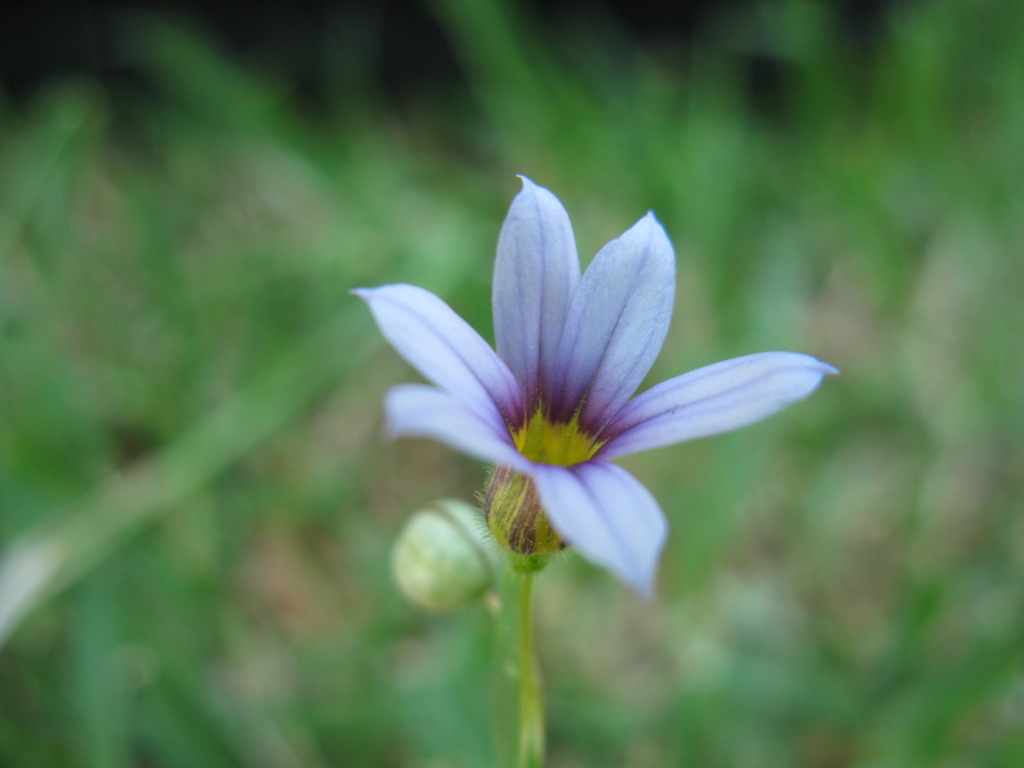Sisyrinchium rosulatum
E.P.BicknellAnnual herb, usually densely tufted, but occasionally a single, few-leaved, complantae tuft. Stem unbranched or branched, erect, 2-angled, 5–20 cm high, c. 1–1.5 mm wide. Leaves linear, 2–6 cm long, 1–3 mm wide. Primary bracts ovate to lanceolate; outer primary bract 1.8–3 cm long; inner primary bract 1.5–2.3 cm long. Perianth 5–7 mm diam., colour variable, pale yellow with brown-purple markings in throat, or lilac to mauve with a purple throat throat, yellow within the tube, usually glandular-pilose externally; lobes oblong-acuminate; staminal filaments 1–1.5 mm long, the lower two-thirds united; anthers up to 1 mm long; ovary c. 1 mm diam., usually glandular-pilose. Capsule 2–3(–)4 mm diam., green to reddish; seeds globose, c. 0.7 mm diam., rugose, black. Flowers Oct.–Jan.(–Mar.).
VVP, VRiv, GipP, OtP, CVU, NIS, EGL, EGU, WPro, HSF, MonT. Also naturalised ?WA, Qld, NSW, LHI, NI, ACT. Native to South America. A locally common weed in southern Victoria, occurring in nature-strips, and pasture, or sometimes native grasslands in winter-wet sites.
Although seldom grazed, it is reputed to be toxic to stock.
 Spinning
Spinning



